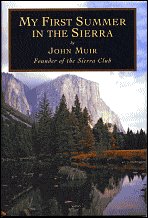U is for Ubehebe Crater. Partly just because I like to say it (pronounce all the letters: you-bee-hee-bee. Fun). Since it's Friday, it's also a Flash Fiction day, and I combined this with the
Chuck Wendig weekly writing challenge--this time, to pick an opening sentence from some 400 posted last week by his readers. I read them until I found one that I thought fit my peak of the day, and wrote 750 words (even though Chuck gave us up to 2000 this time, I thought I'd keep it a little shorter for the A to Z folks). The sentence, which I took the liberty of modifying into two sentences, was by
Ada Ireland.
Ubehebe
They say to err is human, to forgive divine. The second half of that saying is a complete lie. Consider the incident at Ubehebe Crater. That sounds like the title of a Hardy Boys mystery, but it was deadly serious to me. Unfortunately for me, it was equally serious to the gods involved.
I don’t even know exactly which gods were there. Probably Pele; it is, after all, a volcanic crater. But she wasn’t alone, not by a long chalk, and none of the gods did much forgiving that day.
After saying so much, I suppose I’d better tell you the whole story. See, I went there because I’d heard there were some interesting things living in the silty mud puddle at the bottom of the crater. And I went at night, because I didn’t have the proper permits for my research, and National Parks are a bit fussy that way. I suppose that was my first all-too-human error: thinking my work was more important than the rules.
But that was a human error with human consequences. It was the other error that led to the real trouble.
When I got to the rim of the crater, there was no one around. It wasn’t closed, exactly, because there aren’t any gates or anything. But there isn’t much point in sight-seeing in the dark, and with the tourists long gone to their dinners and beds, there were no rangers, either.
The wind was blowing hard on the rim, as it usually does in the spring. I knew it would be better once I was down in the crater, so I grabbed the pack with my research equipment and headed down the trail fast. I didn’t bother with a light, since there was enough moonlight to see my way, and nothing much to trip over.
I got to the bottom, and sure enough, there’d been just enough rain to maintain puddle down there. It’s a shallow mess of this incredible red silt, so fine it pretty much just stays suspended in the water. Just in case the creatures were light sensitive, I scooped up a bunch of the muck into my specimen containers before I turned on my headlamp. No one would see my light unless they were on the rim, so it was safe enough now.
That was my next and more serious error. I assumed that human observers were my only worry. I happily shone my light into the selected muck, and studied the creatures wriggling in the red silt. Sure enough, those were like nothing I’d ever seen. I couldn’t wait to get a few back to the lab and study them.
I didn’t want to endanger any rare species, so I selected just four specimens and returned the rest to their mud puddle. Stowing the others in my pack, I turned to go.
And came face to glowing face with something that I could only vaguely comprehend.
“You would steal our young?” The voice echoed and boomed, though I think the sounds were confined to the inside of my head.
I opened my mouth, and the entity waved an appendage. “There can be no defense. Return the spawn to their nest!”
I was a little slow to work that out, and before I could figure it out and remove my pack again, the being chose to nudge me along with a bit of a lightning bolt. I thought it was only Zeus who did that, and maybe Odin. But this deity—and I had no doubt that I had offended whatever god rules over the desolate volcanic lands of Death Valley—was well-armed. When I turned and thought about trying to escape, I heard voices echoing all around me, warning me to stand. She—he?—wasn’t alone.
Very carefully, I removed my pack, took out the specimen bottles, and released the strange squigglers back into their muck. Then I turned to climb out of the pit. I’d done what they asked, and promised aloud to leave and never come back. No harm, no foul, right?
Wrong. The gods don’t forgive. They are rather more interested in vengeance.
#
My puddle is drying fast under the desert sun. If there is no more rain, the water will all be gone in another two days, and I will die, for a frog requires water. The squigglers have vanished; I don’t know how or where.
I wonder if they have discovered my car yet, and what the rangers will think. I don’t think the gods left a note.
###
Ubehebe Crater is in the north end of Death Valley, not far from Scotty's Castle. It is the blown-out remains of a small volcano, which spewed cinders all around before and during the massive steam explosion that changed it from a cone to a crater. It is 600 feet deep and a half mile across.
 |
| Ubehebe Crater in 2005. You can see the puddle in the bottom; there was no water down there in April 2015! |
 |
| Yes, there are strange little wigglers in that puddle, or there were in 2005. |
©Rebecca M. Douglass, 2015



















































